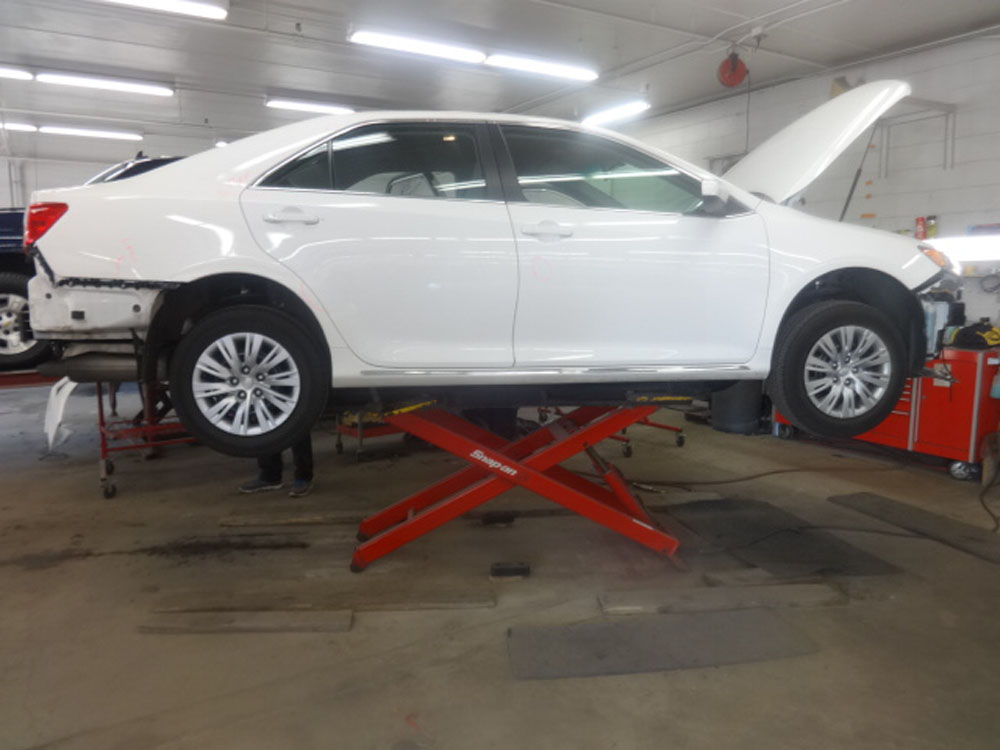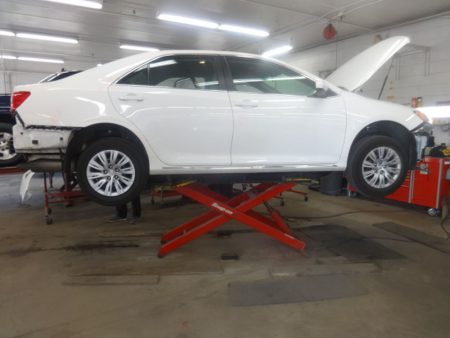
 Winter is about to arrive in Minnesota, and it is time to prepare your vehicle for road conditions. Due to the fact that cold weather increases demands and can exacerbate pre-existing issues, here are some factors to consider:
Winter is about to arrive in Minnesota, and it is time to prepare your vehicle for road conditions. Due to the fact that cold weather increases demands and can exacerbate pre-existing issues, here are some factors to consider:
Standard Preventive Maintenance
It is essential to ensure that your vehicle’s overall maintenance is current. This will ensure that your vehicle’s brakes, belts and hoses, engine, exhaust system, fluids, and filters are in good condition and prepared to withstand the cold. Change your oil and filter every 3000 to 5000 miles at minimum.
Check Your Vehicle’s Battery
In extremely cold temperatures, your vehicle’s battery must provide more current to start the engine. To avoid a dead battery on a cold morning, have your local auto repair shop perform a load test on your battery to determine its health. Battery cables and terminals that are cracked or corroded should also be inspected.
Replace Windshield Wipers and Refill Wiper Fluid
When they are unable to see out of their windshield during the first major snowstorm of the season, many motorists realize they need new windshield wiper blades and wiper fluid. Having sufficient windshield wiper fluid is essential for keeping your windshield clear of ice, snow, salt, and mud. Make sure to use windshield wiper fluid that is resistant to freezing. We recommend rubber-coated blades to combat ice accumulation. Build up your windshield washer solvent supply. Ensure that your vehicle is equipped with a high-quality ice scraper and snow brush.
Heater and Defroster
For passenger comfort and driver visibility, the heater and defroster must be in good working order. To ensure proper defrost operation, your air conditioner must also be in working order. If your windows are foggy, make sure the button for fresh air is selected.
Examine (And Perhaps Replace) Your Tires
Examining your tires for remaining tread life, uneven wear, and cupping is strongly advised. Check the sidewalls for punctures and nicks. Consider snow tires if you live in an area that receives a lot of snowfall. Snow Tires are constructed of softer rubber that remains flexible in colder temperatures and have treads that are specially designed to maintain traction on snow and ice.
Examine Tire Pressure
For winter conditions, it is important to ensure that your tires are properly inflated. The air pressure in your tires will decrease by approximately 1 PSI per 10 degrees when the temperature drops. Therefore, you should check your tire pressure once per month and ensure that your tires have cooled down before doing so. Check your owner’s manual for the exact number, but 30-35 PSI is the standard tire pressure recommendation. Ensure that you rotate your tires as instructed by your mechanic.
Alternate Your Oil
Cold weather has a tendency to thicken oil and reduce its ability to circulate within the engine, so ensure that your vehicle has fresh oil to keep it running smoothly. Some experts recommend using thinner oil during the winter months; however, you should consult your owner’s manual or a local mechanic to determine if this is the best course of action for your vehicle.
Inspect Belts And Hoses
Cold temperatures have a tendency to weaken your belts and hoses. Belts and hoses are essential to the engine’s operation. You can prepare by inspecting all belts and hoses for cracks and other signs of wear.
Carry an emergency kit in your vehicle.
Despite careful preparation, winter weather can catch you off guard. You should equip your vehicle with an emergency kit containing blankets, flares, a jack, a first-aid kit, a flashlight, a shovel, food, and kitty litter or sand for traction if you become stuck.
Every vehicle should contain a quality emergency kit. Here is a list of items we believe you should always have on hand:
- Small bag/bucket of sand, gravel or kitty litter
- Small shovel
- Extra mittens, gloves and hats
- Flashlight (with new batteries)
- Road flares
- Whistle
- Blankets
- First Aid Kit
- Jumper cables
- Rope
- Cutting instrument (box cutter, pocket knife)
- Duct tape
- Gloves
- One gallon of water (in a metal container, as plastic can freeze and crack in the winter)
- Basic tool kit (such as screwdrivers, wrenches, and pliers)
- Hand cleaner to remove the dirt/grease that invariably gets on you • Non-perishable snack bars
- Cell phone charger
- Spare set of keys
- Car chains

